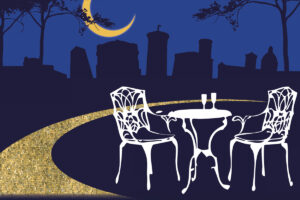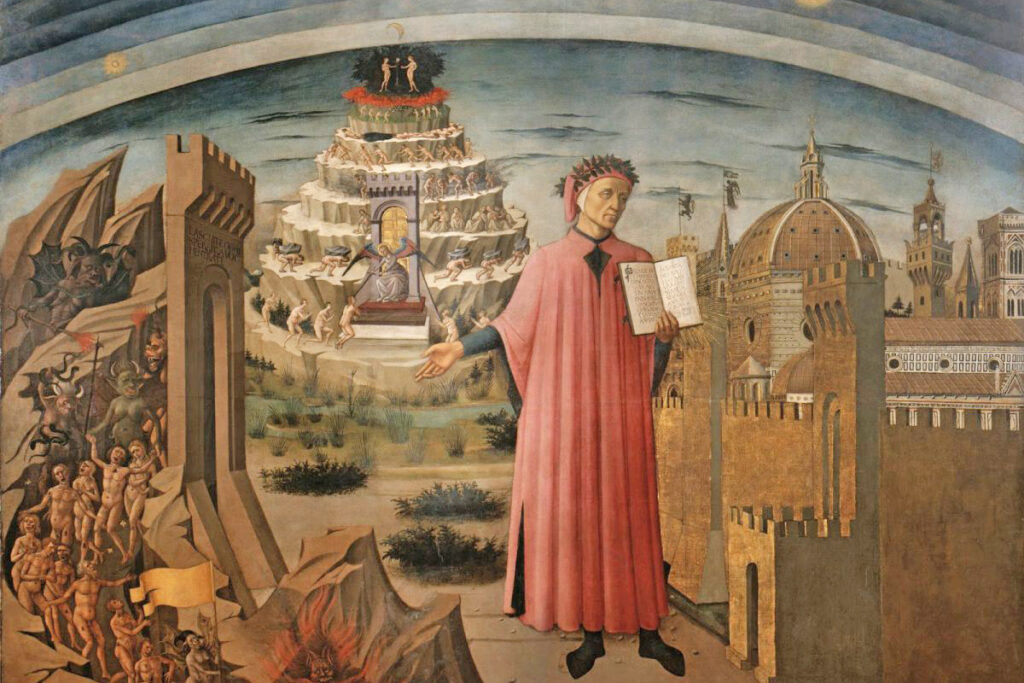Dante Alighieri, the father of the Italian language, trod upon Ravennese soil many times, until he permanently established himself here years after his exile from Florence.
The precise date of his transfer is uncertain, however there are several hypotheses: Giovanni Boccaccio indicates that he moved here in 1314, while Corrado Ricci suggests that it was in 1317. What is certain is that he remained in the city until his death in 1321.
He didn’t stay in Ravenna for many years, but he did stay long enough to draw inspiration for several of his literary works. It is here that he finished the Divine Comedy, the work that more than any other has made Ravenna famous across the world.
The footprints of the Supreme Poet are still visible today. Follow a true Dantean itinerary on his traces!
Casa Scarabigoli
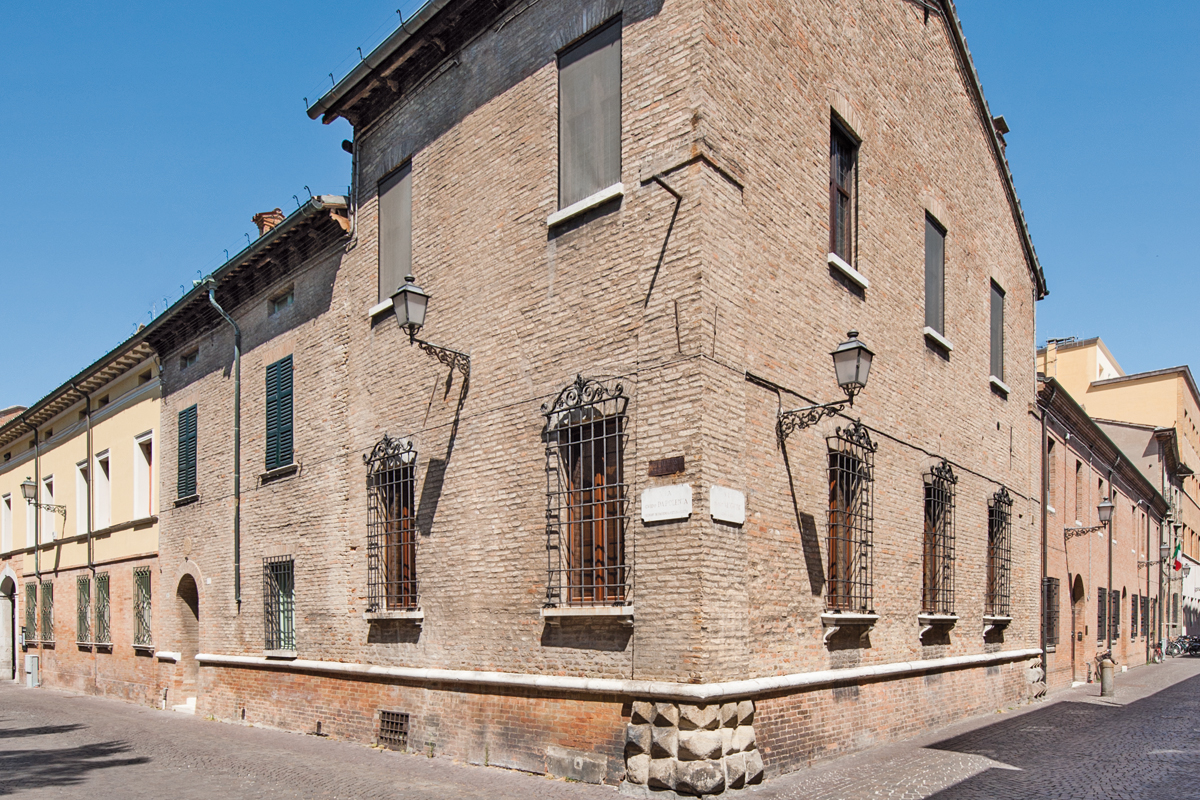
At the corner between Via da Polenta and Via Dante Alighieri you can find an old residence known as the Casa dei Polentani. A stone inscription informs us that the poet resided here during his stay in Ravenna, as he was guest of the owners.
Pine forest of Classe
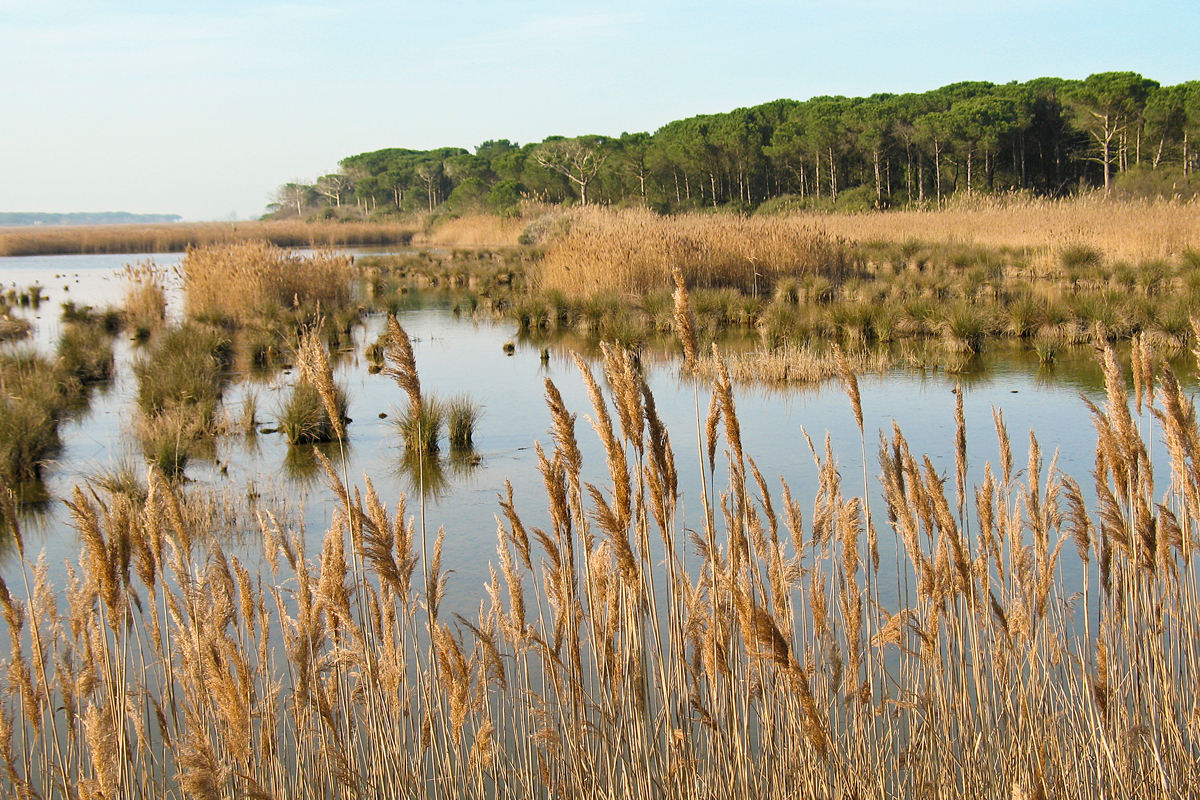
[…] for to the leaves, with song, birds welcomed those
first hours of the morning joyously,
and leaves supplied the burden to their rhymes- 18
just like the wind that sounds from branch to branch
along the shore of Classe, through the pines
when Aeolus has set Sirocco loose.
(Purgatory XXVIII, vv. 16-21)
The Pine forest of Classe, located a few kilometers south of Ravenna, inspired Dante in his representation of the «thick and vibrant» woods of the terrestrial Paradise, which receives Dante and Virgil along their path in the 28th Canto of Purgatory.
Museo Dante
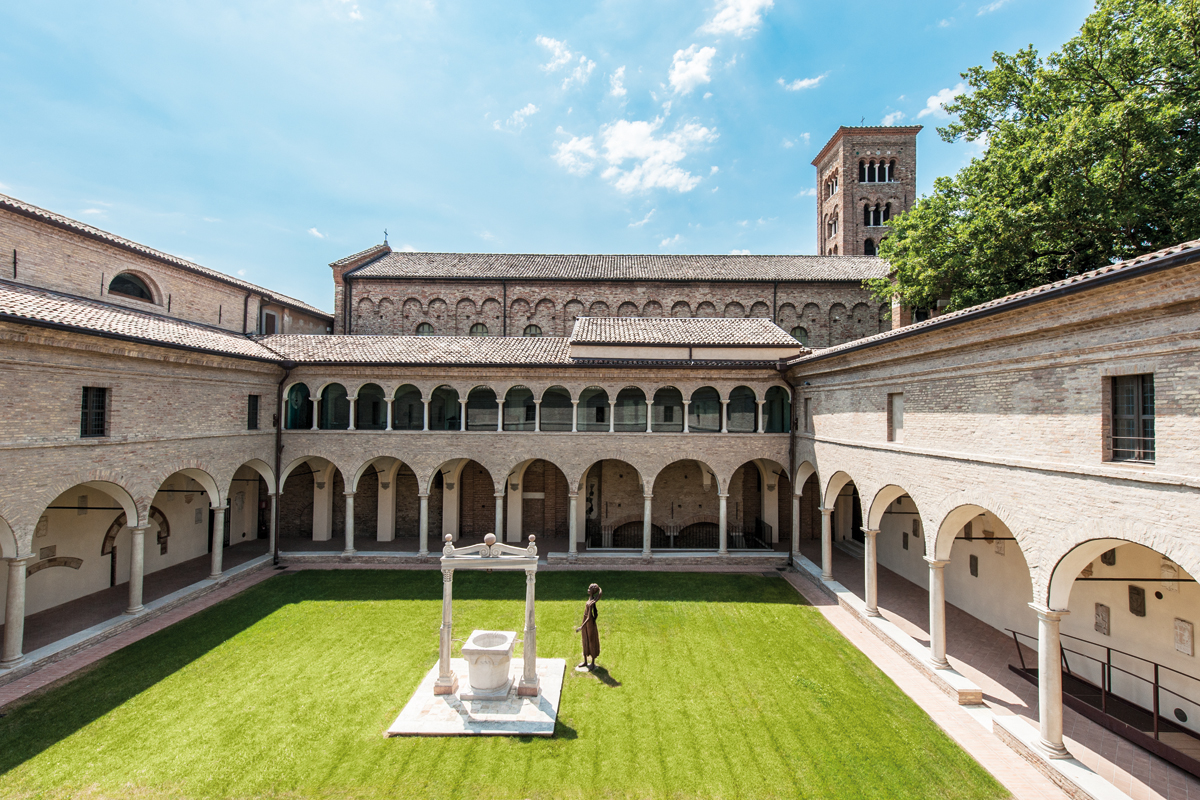
Museo Dante is housed within the suggestive framing of the Old Franciscan Cloisters, within walking distance from Dante’s Tomb.
This brand new museum offers an exciting journey through the story and the imagery related to the human and artistic voyage of Dante, exploring in detail the themes of the Divine Comedy and its resulting success. Furthermore, the museum hosts paintings, graphic and sculptural works , and rare and curious relics (such as the wooden box that contained the bones of Dante from 1677 to 1865).
The Basilica of San Francesco
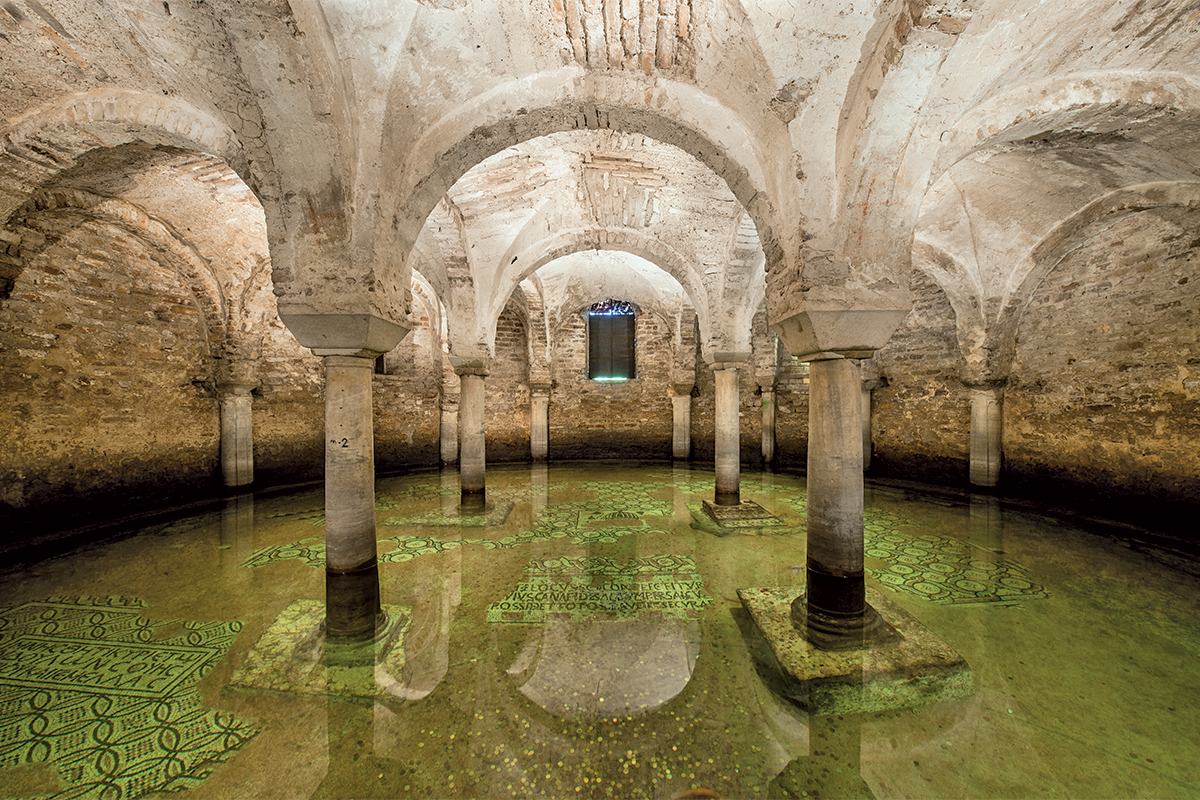
The Basilica of San Francesco, built in the 5th century AD and rebuilt in the 10th century AD, came to be known as “Dante’s Church” because the poet came here to pray and meditate. Furthermore, Dante’s funeral was organised right here by the Da Polenta family.
At the back of the central nave it is possible to admire the crypt. Constantly submerged by water in which several goldfish swim (and in fact situated below sea level), the crypt hosts the beautiful mosaic fragments of the original Church. Just insert a 1 € coin to illuminate the crypt and admire it in all its splendor.
Dante’s Tomb and Quadrarco of Braccioforte
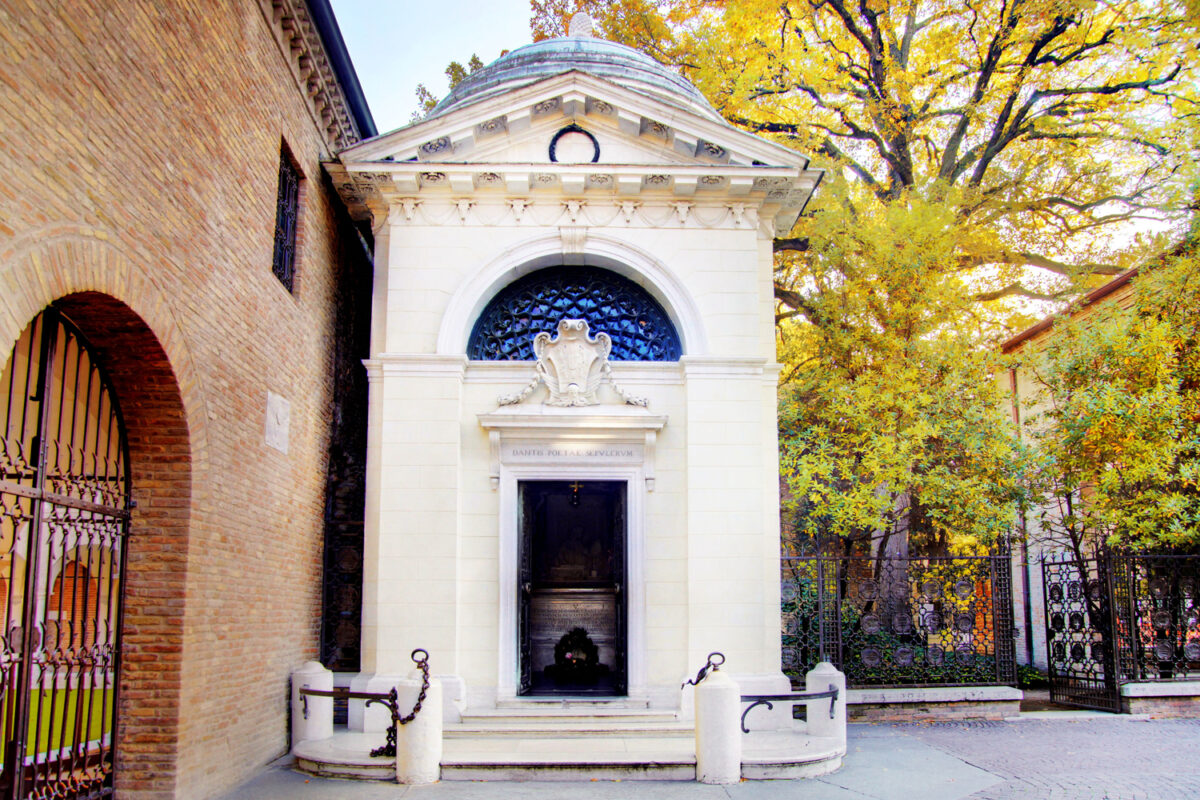
At the end of Via Dante it is possible to see Dante’s Tomb, built between 1780 and 1781 by the will of Cardinal Legate Luigi Valenti Gonzaga. Designed by the Ravennese architect Camillio Morigia, it adheres to the canons of 18th-century Neoclassical architecture. The small building, that you can access through a bronze door, hosts a Roman-era sarcophagus containing the spoils of the Poet.
On the right of the tomb is the Quadrarco of Braccioforte, an ancient oratory that was originally connected to the Basilica of San Francesco. Inside the garden you will find the ruins of the ancient wall in which Dante’s bones were hidden in 1810, while a heap of earth covered by ivy marks the location where the remains of the poet were buried, to protect them during World War II.
These are only a few places in Ravenna related to Dante. Armed with curiosity and will to learn, there is nothing left to do but to discover other locations, maybe even those hidden between the verses of his Divine Comedy.


